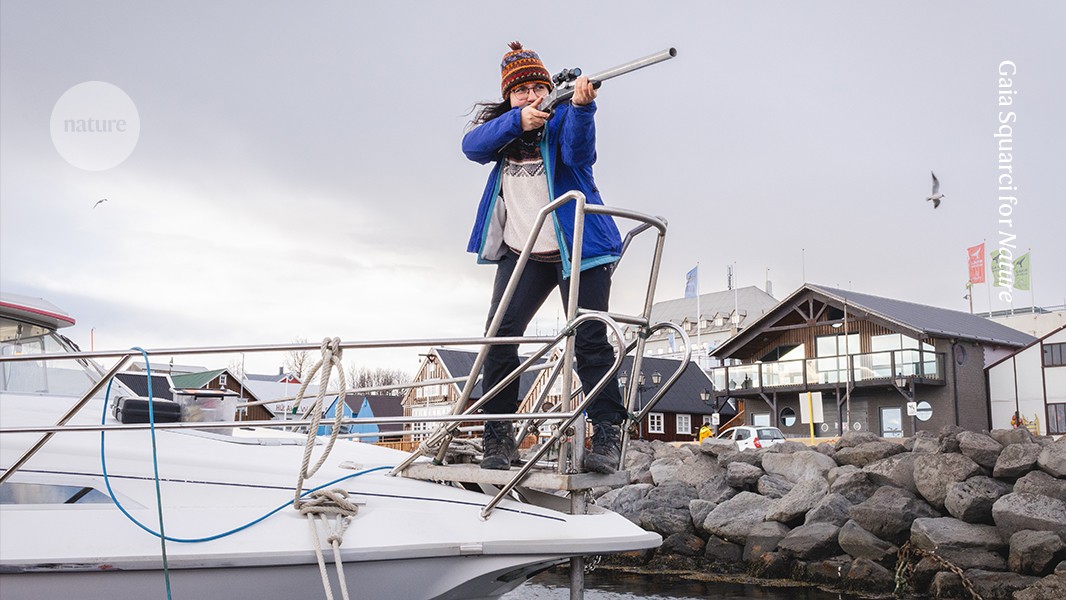“Here, I’m standing on a research boat moored in Húsavík harbour in Iceland’s Skjálfandi Bay, showing how I use a modified rifle to extract tissue samples from humpback whales (Megaptera novaeangliae) while out at sea. From April to November, humpback whales feed here on krill and fish such as capelin (Mallotus villosus) after journeying some 8,000 kilometres from their breeding grounds in the Caribbean and around Cape Verde. This picture was taken on a cold day in May, when a freak storm prevented us from leaving the bay.
When out on the boat, I only have a moment to do a biopsy. Just before a whale dives, its back is arched and at the highest point out of the water; this is when I shoot. From around 30 metres away, I fire a dart into the flank of the whale, under the dorsal fin. When the dart makes contact it takes a small sample of tissue, then it bounces off the whale and floats nearby. I collect these samples, in collaboration with Marianne Rasmussen at the University of Iceland’s Húsavík Research Centre, as part of my master’s degree in marine biology at the University of Groningen in the Netherlands.
Back in the laboratory, I use DNA from the sample to sex and identify individuals. By combining my data with other sets collected by scientists over the past 34 years, we have been able to identify more than 6,500 individual humpbacks from the North Atlantic —and establish connections across feeding and breeding grounds.
There are two recognized breeding populations in the humpback whale population of the North Atlantic. We can also use our data to estimate the proportions of each breeding population in Iceland and in other feeding grounds, which will help with management and conservation efforts.”
This interview has been edited for length and clarity.


